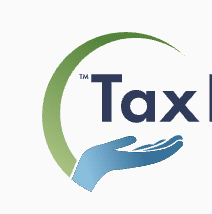
Your employer uses this information to withhold the right amount from each paycheck, giving you control over your tax liability, whether you're starting a new job or adjusting your current withholding.
While complex situations may require assistance from comparing our best tax relief companies, most taxpayers can master their W-4 with proper guidance. This guide will walk you through each step, common mistakes to avoid, and special circumstances that affect your withholding.
Key Insights
- The W-4 form helps your employer determine how much tax to withhold from your paychecks based on your income, filing status, and dependents.
- Review and update your W-4 annually or after major life changes like marriage, divorce, new children, or significant income changes.
- Use the IRS Tax Withholding Estimator to fine-tune your withholding and avoid owing taxes or receiving large refunds.
- Complete all relevant sections accurately to ensure proper withholding, especially if you have multiple jobs or your spouse works.
Understanding the W-4 Form
What Is A W-4 Form?
The W-4 form provides information about your financial and tax situation to your employer so they can withhold the proper amount of federal income tax from your paychecks.
This form directly impacts how much money you take home each pay period and whether you'll owe taxes or receive a tax refund when filing your return.
How The New W-4 Form Differs From Previous Versions
The current W-4 form, updated in 2020, eliminated the allowances system used in previous versions. The old form included personal exemptions that reduced your tax burden, but changes in tax legislation simplified the process.
This form focuses on more accurate withholding based on actual income, filing status, and federal income tax brackets rather than abstract allowance numbers.
When To Update Your W-4 Form
You should review your W-4 form annually or after major life changes. Significant events that warrant updating include:
- Marriage or divorce: Changes your filing status and potentially your tax bracket.
- New children or dependents: Affects available tax credits.
- Income changes: New job, promotion, or loss of income.
- Home purchase: May affect your deduction strategy.
- Additional income sources: Side hustles, investment income, or retirement distributions.
Step-by-Step Guide to Filling Out the W-4
Step 1: Fill Out Personal Information
Before starting, gather essential documents like your Social Security card, previous tax return, and pay stubs from all jobs. The personal information section requires:
- Name: Must match exactly with your Social Security card to ensure proper credit for earnings.
- Address: Your current residential address.
- Social Security number: Enter carefully to avoid processing delays.
- Tax filing status: Single, married filing jointly, married filing separately, or head of household.
Step 2: Complete The Multiple Jobs Section
This section is crucial if your household has multiple income sources. You have three options to handle multiple jobs:
- Use the online estimator: Most accurate method using the IRS Tax Withholding Estimator.
- Use the multiple jobs worksheet: This can be found on page 3 of the form.
- Check the box: Simple option if you have two jobs with similar pay, or you're married with similar-paying jobs.
Pro tip: If you and your spouse both work, you'll each need to complete your own W-4 form. Talk with your spouse about whether you plan to file jointly or separately, as this decision affects how you'll complete this section.
Step 3: Claim Dependants
You can claim children and other dependents if your income falls below certain thresholds. The rules include:
- Child tax credit: This is available if your individual income is below $200,000 or your joint income is below $400,000.
- Eligible children: You must live with you at least half the year and have a valid Social Security number.
- Credit calculation: Do this by multiplying the number of children under 17 by $2,000.
- Other dependents: Qualifying relatives who live with you year-round, have less than $5,030 in gross annual income, or receive at least half their support from you.
Pro tip: Remember that when you claim dependents, you'll see less tax withheld from your paychecks, which means more money in your pocket each pay period.
Step 4: Make Other Adjustments
This section allows you to fine-tune your withholding for specific situations. Here's what you need to know:
- Other income: Report income not subject to withholding, such as interest, dividends, or retirement income.
- Deductions: Include itemized deductions above the standard deduction, student loan interest, or IRA contributions.
- Extra withholding: Request additional tax withholding if you expect to owe taxes.
Most Common W-4 Form Errors
Understanding common tax errors when filling out your W-4 helps you avoid costly mistakes. Here's what you need to avoid:
- Failing to update after life changes: Marriage, children, or income changes all require you to submit a new form.
- Misreporting income: Providing inaccurate income information leads to incorrect withholding amounts.
- Data entry errors: Transposed Social Security numbers or incorrect addresses cause processing delays.
- Ignoring multiple jobs: Not accounting for all your income sources often results in under-withholding.
How W-4 Mistakes Impact Your Paycheck and Taxes
Many people don't realize that incorrect withholding creates a ripple effect throughout the year. Under-withholding means you'll enjoy larger paychecks now but face a potentially stressful tax bill later, while over-withholding essentially gives the government an interest-free loan while reducing your monthly cash flow.
Pro tip: If you've found an error on your form, you can submit a corrected W-4 anytime by downloading a new form from the IRS website or requesting one from HR.
Special W-4 Circumstances and Considerations
Certain situations require special attention when completing your W-4:
- Self-employment income: You can report freelance or business income to have taxes withheld from your W-4 job, or choose to pay quarterly estimated taxes instead.
- Multiple income streams: Include all significant income sources from side hustles, rental properties, or contract work to avoid under-withholding.
- Investment income: If you have substantial dividends, interest, or capital gains, factor this into your W-4 calculations or use the IRS Tax Withholding Estimator.
- Remote work deductions: Home office expenses and other remote worker tax deductions may affect your overall tax situation and withholding needs.
- Quarterly estimated payments: Many self-employed professionals find it easier to make quarterly tax payments rather than adjusting their W-4 withholding.
How to Use the IRS Tax Withholding Estimator
The IRS Tax Withholding Estimator provides more accurate calculations than the basic W-4 instructions alone. This tool becomes particularly valuable in specific scenarios:
- Mid-year adjustments: When you need to change your withholding partway through the tax year due to new circumstances.
- Complex financial situations: If you have multiple jobs, significant investment income, or have experienced major life changes like marriage or divorce.
- Precision targeting: When you want to fine-tune your withholding to avoid owing money at tax time without giving the government an interest-free loan through overwithholding.
What You'll Need For The Tax Withholding Estimator
Before using the estimator, gather these essential documents:
- Pay stubs: From all jobs showing your year-to-date earnings and current tax withholding amounts.
- Most recent tax return: This is for reference on your previous year's tax situation.
- Other income records: Documentation of investment income, freelance earnings, or retirement distributions.
- Social Security card: To ensure you enter your personal information accurately.
Pro tip: Using the estimator helps you avoid giving the government an interest-free loan through overwithholding while preventing the stress and potential penalties of owing significant taxes at filing time.
Conclusion
Getting your W-4 right sets you up for a smoother tax season. Review your form annually and after major life changes, use the IRS Tax Withholding Estimator for complex situations, and submit updated forms whenever your circumstances change.
For complex scenarios with multiple income sources or major life changes, our recommended tax relief service providers can offer professional guidance to ensure you're on the right track.
FAQ
1. How often should I update my W-4 form?
Review your W-4 annually or after major life changes like marriage, divorce, having children, buying a home, or significant income changes. You can submit a new W-4 to your employer anytime during the year.
2. What happens if I don't fill out a W-4 form?
If you don't submit a W-4, your employer must withhold taxes as if you're single with no adjustments, which typically results in the highest withholding rate. This often means more taxes withheld than necessary, leading to a larger refund.
3. Can I claim zero dependents to have more taxes withheld?
Yes, you can choose not to claim dependents even if you have them, which increases your tax withholding and decreases your take-home pay. This strategy helps ensure you don't owe taxes at filing time, though you'll receive a larger refund.



